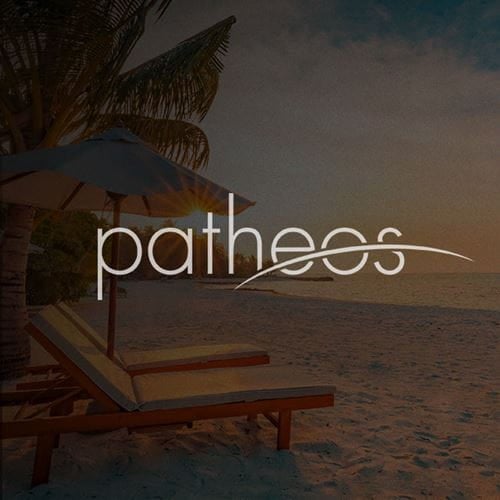- Trending:
- Pope Leo Xiv
- |
- Israel
- |
- Trump
- |
- Social Justice
- |
- Peace
- |
- Love

RELIGION LIBRARY
New Age
Missions and Expansion
While the New Age began in North America, it did not stay there. Within a decade of the tradition’s emergence the New Age had spread to Europe, Africa, and Asia. In many cases, existing religious practices and beliefs made the New Age’s arrival less precipitous that one might expect. New Age practices based on traditional Asian medicinal techniques, for example, already had many proponents in east Asia. However, as the New Age spread outside of North America it took on a slightly different meaning. Rather than rejecting the religious and cultural mainstream of the West, as the New Age did in the United States, the global New Age drew from indigenous traditions and combined them with typically New Age forms.
One of the first areas to which the New Age spread, Europe, presents a special case. Even before the arrival of the New Age to British and continental shores, various metaphysical and occult groups already existed. In fact some scholars, such as J. Gordon Melton, trace the origin of the New Age to the export of ideas from Great Britain’s metaphysical societies to the United States. Regardless, when the New Age arrived in Europe, it spread through established religious organizations and groups. The initial European New Age movement looked a great deal like its North American forbearer, and even in non-Anglophone nations the English-language texts produced by Americans remained the primary documents of the New Age.
Over time, however, Europe began to develop its own unique forms of the New Age. In Italy, for example, the Damanhur community combined New Age beliefs with environmentalism and communal living. Unlike the American New Age sects, which have tended to encourage individual self-development so as to change the world, Damanhur looked to social development that would later impact individuals. The apparent parallel between American individualism and European social-mindedness appears striking in the case of Damanhur.
In Asia, the New Age encountered a different reception. Since many of the New Age’s concepts drew upon inspiration from Asian religious traditions and teachers, the movement’s spread to Asia encountered an audience already familiar with many of the key concepts of the movement, yet in many cases not prepared to accept instruction involving Asian religious concepts taught by North Americans and Europeans. For example, many potential New Agers in Asia already accepted such notions as reincarnation, the healing power of herbs, or the value of yoga. However, the tendency of some American New Age teachers to claim greater awareness or skill in utilizing Asian religious traditions than Asian masters led to charges of colonialism. In many cases, native New Age gurus emerged, incorporated material imported from North America, and constructed their own New Age movements.
Japan provides a representative example. Even before the arrival of the New Age in the late 1970s and 1980s, Japan had experienced a burgeoning of new and alternative religions. Many of these groups contained elements of what one might call the New Age, notably communication with spirits, the use of oracles, and meditative techniques. However, it would be a mistake to call these the New Age. Such practices had long existed in Japan in both the Shinto and Buddhist traditions. Indigenous Japanese new religions combined various elements of those two religious traditions, as well as concepts drawn from foreign religions, but none of these early developments was part of the New Age movement. During the late 1970s, however, American New Age materials had begun to arrive in Japanese bookstores. One scholar attested to finding texts on astrology, divination, UFOs, alternative healing, and spirit contact in mainstream Japanese bookstores of the time. Like the broader New Age movement, Japanese New Agers digest such material as part of their private religious practice, and few New Age organizations exist. Journals such as Tama Mind Network serve to unite the New Age subculture in Japan.
At the same time that American New Age practices gained wider attention in Japan, Japanese New Age gurus founded their own schools of New Age thought. Though such movements were often small and ephemeral, some of them, such as Shoko Asahara’s infamous Aum Shinrikyo new religion, founded in 1986, made a powerful impact. Asahara incorporated a traditional Japanese spiritual tradition with Hindu yogic practices, Tibetan Buddhism, and American apocalypticism. As sociologist Robert Jay Lifton has demonstrated, the same features that distinguish the New Age broadly, namely transformation and healing, characterized Aum Shinrikyo. Its violent 1995 Tokyo subway gas attacks in fact emerged from the movement’s attempt to “force” the New Age into beginning. Though Aum’s violent end is hardly representative of the Japanese New Age, its combination of Indian and Tibetan religious elements with Japanese Buddhism, alongside the incorporation of American New Age-style spiritual transformation, is representative. It also reveals how the New Age transformed as it spread across the globe.
Africa and South America also served as fertile ground for the New Age. Scholar Rosalind Hackett has noted that Nigeria features a sizable New Age subculture that fuses the occult, metaphysical, and indigenous African traditions. In addition to direct transplants of New Age materials and sects from the West, Nigeria has produced its own crop of New Age alternative healers and visionaries, many of whom combine western occult practices with African spiritualism, alongside a message of prosperity and mind-cure clearly drawn from New Age. Hackett notes that traditional African beliefs in reincarnation and spirits provided fertile ground for such New Age developments. Similarly in South America, the traditional creole religions of Candomblé and Umbanda (the latter rooted in 19th-century Spiritualism) as well as Amerindian religious practices provided a background for the successful arrival of North American-style New Age.
Study Questions:
1. How did the New Age movement change as it spread to other continents?
2. Why was the New Age movement accepted differently in Asia than Europe?
3. Who was Aum Shinrikyo? How did he attempt to spread the New Age movement through violence?
4. Why was the New Age movement widely accepted in Nigeria?










